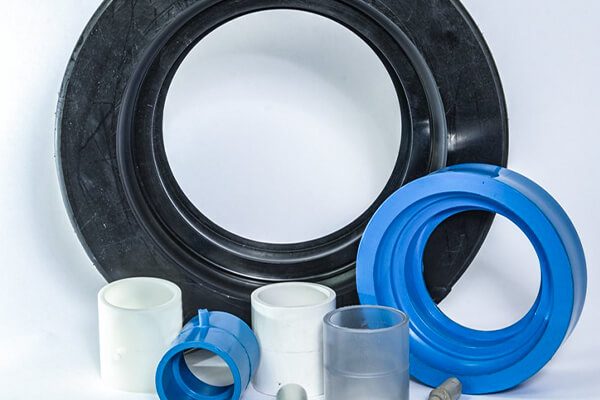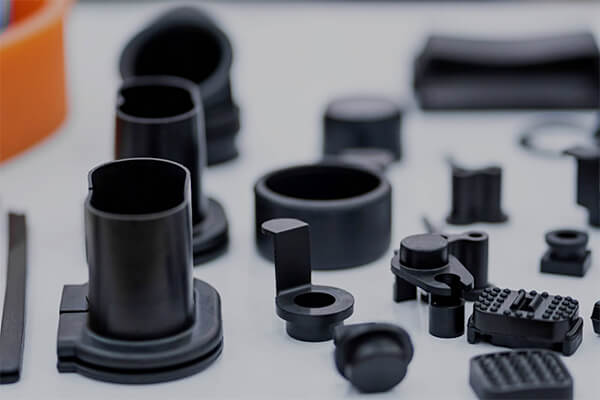Thick Wall Injection Molding: To Custom Thick-Walled Parts
Thick wall injection molding is used to produce custom plastic parts with significantly thicker walls than those typically found in standard injection molded parts, different from convention injection molded parts that generally have uniform wall thickness. These thick-walled parts always have specific structural, load-bearing, or insulation requirements.
At Sungplastic, we pay more attention to thick wall injection molding and have some practices of thick-walled parts. Our designers work to strike a balance between achieving the part’s functional requirements and optimizing the manufacturing process.
If you are looking for the services of thick wall injection molding, we will give the most effective advice and assist you in the successful completion of the project.
Please know more about below this.

What is Thick Wall Injection Molding?
Thick wall injection molding is a highly efficient manufacturing method for producing intricately designed components with exceptional strength-to-weight ratios. However, thick wall injection molding often diverges from the conventional principles of well-structured injection molded part design. Traditional part design for injection molding typically specifies wall thicknesses ranging from .060” to .180”, emphasizing uniformity throughout the component. In contrast, thick wall injection molding involves selectively removing excess material from the thicker sections of the design, a process known as “coring out.” This technique serves to maintain wall uniformity, reduce overall part weight, and enhance cycle times. Generally, parts with wall sections measuring .250” or more are classified as thick-walled parts. In certain applications, thick sections might be required to meet specific performance criteria. At Sungplastic, our injection molding team boasts significant expertise in designing and molding thick-walled parts.
What is Wall Thickness in Injection Molding?
Wall thickness in injection molding refers to the measurement of the thickness of the walls or cross-sectional areas of a plastic part that is being produced through the injection molding process. It is a critical design consideration and parameter in injection molding, as it can have a significant impact on the final quality, structural integrity, and manufacturability of the part.
Here are some key points regarding wall thickness in injection molding:
-
- Uniformity
Ideally, designers aim for uniform wall thickness throughout a plastic part. This helps ensure consistent cooling and reduces the likelihood of defects such as warping, sink marks, and voids. - Design Considerations
Designers must carefully select appropriate wall thicknesses based on the specific requirements of the part. Factors to consider include the part’s function, structural needs, material properties, and manufacturing constraints. - Thin Walls
Thin walls can lead to issues like warping, poor surface finish, and reduced structural integrity. However, they can be beneficial for reducing material costs and cycle times. - Thick Walls
Thick walls may be necessary for parts that need to bear substantial loads, provide durability, or meet thermal insulation requirements. However, they can increase material consumption and cycle times. - Transition Areas
Transition areas between thin and thick sections should be designed with care to minimize stress concentrations and flow-related defects. - Moldability
Proper wall thickness is essential for moldability. Thick sections may require longer cooling times, while thin sections may solidify too quickly, causing flow-related defects. - Material Selection
The choice of plastic material can impact the acceptable range of wall thicknesses. Different materials have varying flow properties and shrinkage rates. - Tolerance and Precision
Maintaining tight tolerances on wall thickness is crucial for parts with specific functional requirements, such as sealing or mating with other components. - Prototyping and Testing
Prototyping and testing can help validate the chosen wall thicknesses and identify any potential issues before mass production.
- Uniformity
Wall thickness is a critical parameter in thick wall injection molding that affects part quality, manufacturability, and cost. Properly designed and controlled wall thickness is essential for producing high-quality plastic parts with the desired properties.

Why Are Thick Walls Necessary in Some Applications?
- Structural Integrity
Thick walls become essential when a component must bear substantial weight, preventing the buckling of supporting ribs and ensuring overall structural stability. - Mass Requirements
Some designs necessitate a specific mass to fulfill the intended function of the part effectively. - Abrasion Resistance
In high-abrasion environments, thick sections serve as a protective barrier, sacrificing material to extend the part’s lifespan. - Thermal Insulation
To meet precise insulation requirements, thicker sections may be required, as plastic is an effective insulator of heat. - Substituting for Metal
In numerous cases, plastic parts are replacing machined aluminum components to reduce weight and manufacturing costs. The original design’s geometry, including thick sections, may be retained in the plastic part. - Alternative to Compression Molding
Thick-walled parts can also be used as an alternative to compression molding, reducing cycle times and increasing production capacity.
What Manufacturing Challenges Are Associated with Thick-Walled Parts?
- Material and Cycle Time Costs
Thick walls result in higher material consumption and longer cooling times, which significantly impact part production costs. - Tolerance Maintenance
Maintaining tolerances within the range of +/- .002” to .005”, typical for most parts, becomes challenging as the volume of material shrinking across thick sections during cooling increases. Variations in the molding process can magnify this challenge. - Internal Stresses and Warping
Non-uniform wall sections can lead to differential shrinkage, causing internal stresses or warping in the part. - Sink Marks and Vacuum Voids
During cooling, molded parts solidify from the outside in. If the inside of thick sections continues to shrink after the outer surface solidifies, it can result in “sink marks” on the outside or create vacuum voids within the part.
What Causes Vacuum Voids in Thick-Walled Parts?
Vacuum voids in thick-walled parts occur due to the cooling and shrinking of plastic during the thick wall injection molding process. When under pack pressure during cooling, the mold steel removes heat from the plastic. While the outer surfaces of the part solidify and conform to the mold cavity, the inside of the thick section remains soft and continues to cool. As the plastic shrinks during this cooling phase, it can either pull the outer walls inward, creating “sink marks” on the exterior, or create vacuum voids within the part’s interior.
How can Voids Be Inspected for?
Inspecting for voids in thick-walled parts can be done through various methods:
- Weight Comparison
A rudimentary method involves weighing the molded part and comparing it to a standard weight. If the part weighs less than the standard for a full shot, it suggests the presence of voids. - Visual Inspection
Cutting the part across thick sections can reveal voids, allowing for adjustments to the molding process. - Ultrasonic Testing
Ultrasonic testing utilizes high-frequency sound waves introduced to the part via a transducer probe to detect internal voids by identifying echo patterns. This method can identify voids not detected by weight comparison. - X-ray Inspection
X-ray examination is suitable for identifying voids in small sections of the part. - Micro-CT Scanning
Micro-CT scanning offers fine-resolution inspection and can detect voids as small as half the diameter of an individual glass fiber. However, it is typically used in research settings and may not be practical for large-volume production due to sample size limitations.
How can Voids Be Eliminated or Minimized?
To reduce or eliminate voids in thick-walled parts, the following process modifications can be considered:
- Adjusting Pack Pressure
Fine-tuning the pack pressure during the cooling process can help control material flow and reduce void formation. - Optimizing Cooling Time
Altering the cooling time can impact the rate at which the part solidifies, potentially minimizing voids. - Temperature Control
Managing cooling temperature is crucial in achieving the right balance between cycle time efficiency and void control. Careful temperature control can mitigate void formation.
Balancing these variables is essential to achieve the desired part quality while optimizing the manufacturing process for thick-walled components.
Sungplastic: Thick Wall Injection Molding Service
Our thick wall injection molding service includes:
Low to high volume production
Small part injection molding
Large part injection molding
Batch manufacturing
Rapid prototyping
Thick wall injection molding molds fabrication
Custom thick-walled parts design and mold design
Wide range of material selection (various color available)
Professional designers and skilled worker
Standard production lines and advanced machinery
Contact us directly, and start your project right away!
Get a free quote and design analysis today.
We’ll reply to you within 6 working hours.
We respect your privacy.
+86 139 2927 4777 (WhatsApp, Wechat)
